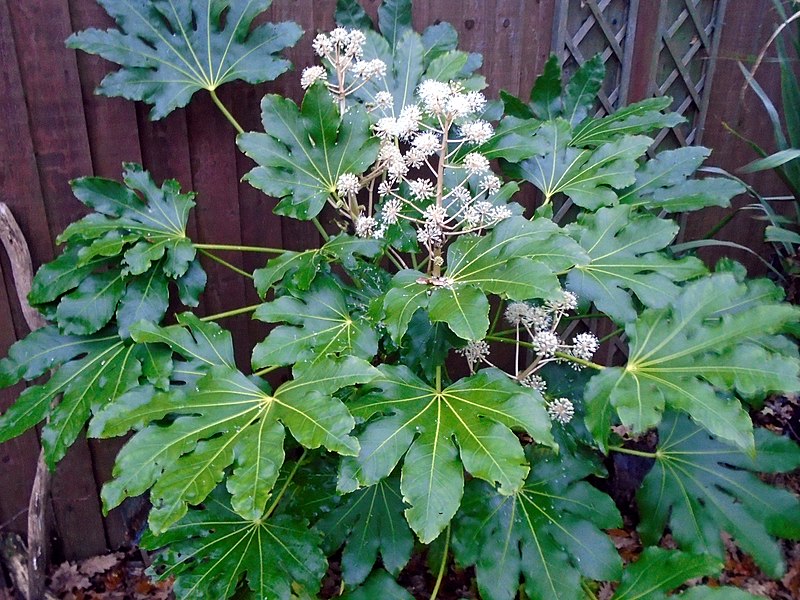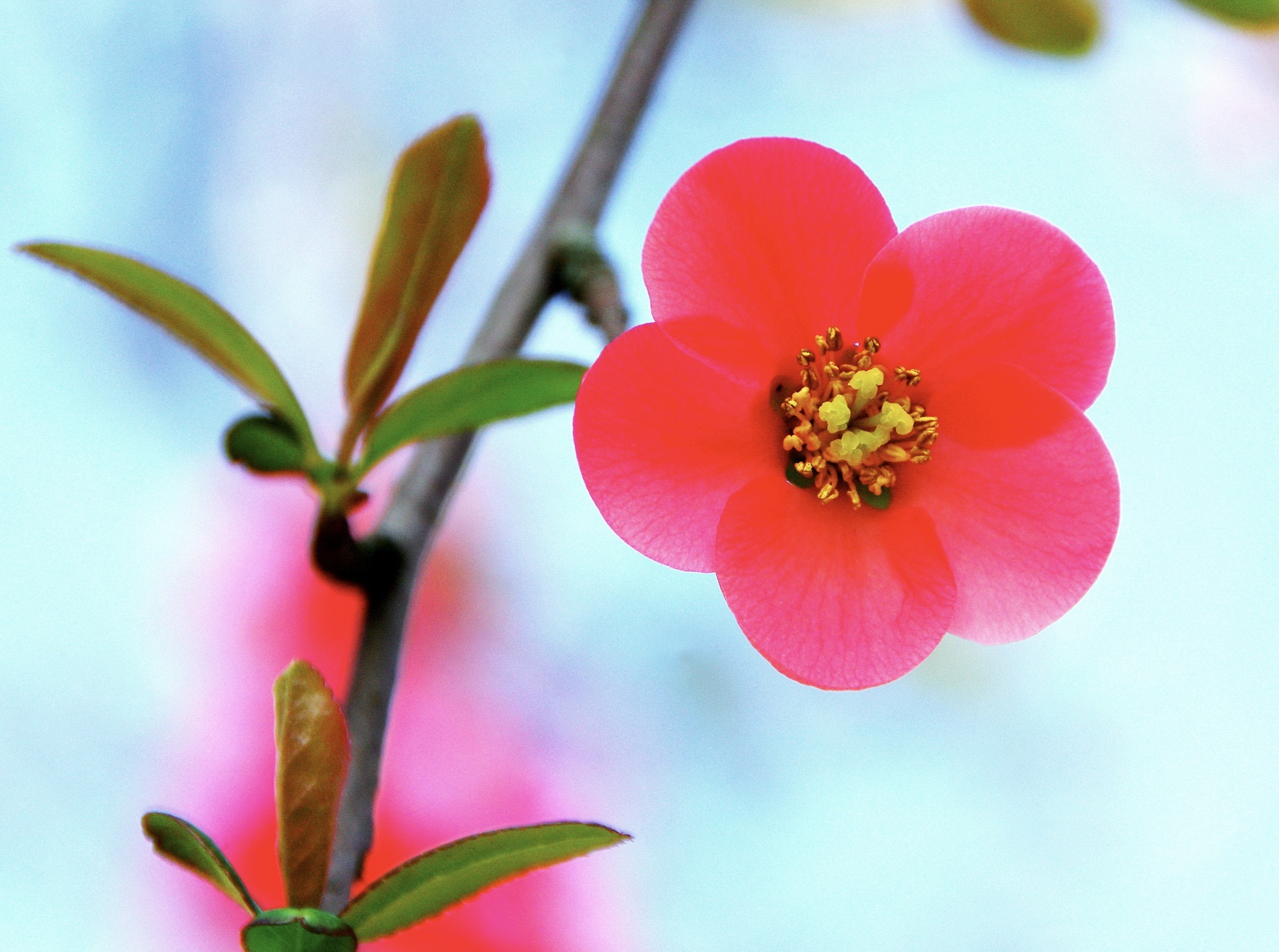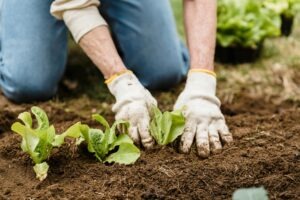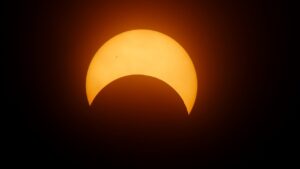Many people regard winter as a bleak and barren time in the garden. Deciduous trees have lost their leaves, perennials have died back and the garden has entered its period of rest. Such a setting, however, provides the perfect foil for the “gems of winter”—those shrubs that put forth their blossoms in January and February and enliven the winter landscape with beauty.
Consider these shrubs as you plan your winter garden:

Fatsia (Fatsia japonica)
This zone 8, shade-loving, evergreen native of Japan grows 5 to 7 feet tall and 4 to 6 feet wide and lends a lush, tropical effect to the garden. The large, apple-green leaves consist of 7 to 9 fingers fused together at the base; it makes a bold, coarse-textured statement in the landscape.
Although fatsia is used almost exclusively for its dramatic foliage, the unusual-looking flowers add winter interest to the plant. The flowers consist of many, creamy-white knobs atop same-colored stalks emanating from the center of the structure. In fact, the flower structure resembles the top of Dallas’ Reunion Tower lit up at night. The flowers give understated drama to this gorgeous plant at a time of the year you would least expect to see flowers on a shrub.

Flowering Quince (Chaenomeles speciosa)
Growing 4 to 8 feet tall with a 4 to 6 foot spread, this densely twiggy, round-headed deciduous shrub hailing from China declares that winter is almost over and that spring is just around the corner. It does so by sporting a profusion of 1 to 2 inch wide, rose-like blossoms that appear before the foliage emerges. Among the varieties available, ‘Texas Scarlet’ produces orange-red flowers, ‘Jet Trails’ yields white flowers, and ‘Cameo’ bears peach-pink flowers.
The new ‘Double Take’ series of quince reaches a compact size of 3 to 4 feet tall and produces larger, 2 inch flowers with more petals. The flowers actually resemble camellia blossoms, and the branches sport no thorns as most other quince varieties do. The three colors in this series are ‘Scarlet Storm,’ ‘Pink Storm’ and ‘Orange Storm.’ All quince prefer full sun to light shade and tolerate most soils except those that are highly alkaline.

Leatherleaf Mahonia (Mahonia bealei)
Also from China, leatherleaf mahonia is a slow-growing, evergreen shrub adapted to USDA hardiness zones 6-9. Its woody, erect stems grow to a height of 4 to 6 feet with a spread of 3 to 4 feet. The pinnately-compound leaves, 12 to 15 inches long, grow from the stems in horizontal tiers and feature 9 to 13 leaflets that are grayish- or bluish-green above and olive green below. Each stiff, leathery leaflet features sharp, marginal spines that give the foliage a holly-like appearance.
This coarse-textured yet graceful shrub brings cheer to the months of January and February when it produces 3 to 6 inch long, swirling racemes that sport small, delightfully fragrant, lemon-yellow flowers that entice both bees and humans at a time when few other plants are blooming. The flowers are followed by large clusters of striking, purplish-blue berries that remain throughout the summer unless devoured by birds, who find them irresistible.

Rosemary (Rosmarinus officinalis)
Spice up your winter landscape with this evergreen shrub native to the Mediterranean region. Depending on the cultivar, this woody herb grows 2 to 6 feet tall and equally as wide. As if the aromatic leaves weren’t enough to entice you to include it in your landscape, the shrub also sports small, light blue flowers from late winter through April and May. Plant this delightful shrub in full sun in well-drained soil in zones 7 to 11.
Winter Daphne (Daphne odora)
Called winter daphne because of its late winter flowers, this evergreen shrub from China and Japan grows 3 to 4 feet tall and 2 to 4 feet wide. From late January to March in USDA zones 8-9, this slow-growing shrub produces clusters of intensely fragrant, reddish-purple flowers set against dark green, glossy leaves up to 4 inches long.
The cultivar ‘Aureomarginata’ is a variegated form featuring green leaves with yellow margins. This cultivar exhibits slightly better winter hardiness than the species. Plant in partial shade in moist, well-drained soil.
Winter Honeysuckle (Lonicera fragrantissima)
This is a must-have shrub for winter flowers and their intoxicatingly delightful, lemony fragrance. This deciduous shrub hails from China and grows 8 to 10 feet tall with a spread of 6 to 8 feet as far north as zone 5. It forms a multiple-stemmed, large shrub with arching branches and a rounded head. As early as December and through the spring, it produces very small, creamy-white flowers in the leaf axils. In fact, the flowers are hardly noticeable, but the nose can certainly detect their fragrance in the landscape.
Since this shrub is kind of an “ugly duckling,” it’s best to plant it toward the back of the border but close enough to your route through the yard so that you can enjoy its fragrance. Plant in full sun to light shade in just about any kind of soil.

Winter Jasmine (Jasminum nudiflorum)
One more shrub from China, winter jasmine is a very tough, low-growing, deciduous shrub that tolerates poor soil and, to an extent, drought. It grows 3 to 4 feet tall, spreads 4 to 6 feet wide, prefers sun to part shade and forms a rounded mound with arching branches. The square stems remain green all winter, giving the plant an evergreen appearance. As early as February, 1 inch wide, yellow flowers appear sporadically along the arching branches, which rarely produce heavy, consistent bloom. However, the forsythia-like flowers act as a delicate harbinger of spring and add beauty to an otherwise drab, winter landscape.
There’s no reason to have a drab winter garden. You can fill your landscape with shrubs that invigorate the months of January and February with beauty, delight and fragrance.







